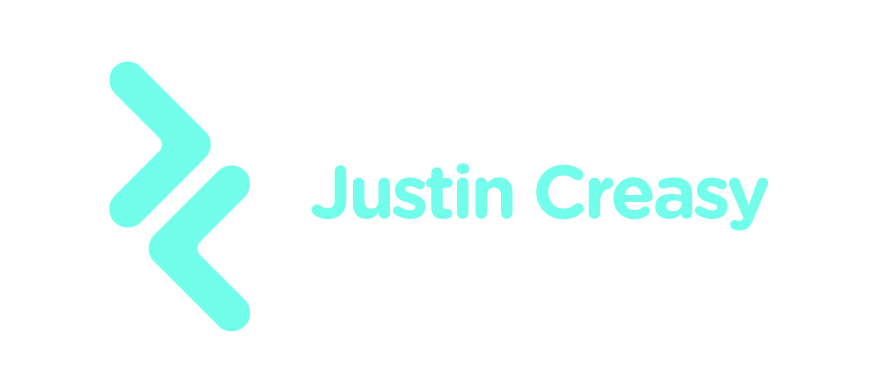Getting Started with GitHub: A Beginner’s Guide
GitHub is a powerful platform that developers use to collaborate on projects, track changes in code, and manage software development efficiently. If you’ve ever wondered how to use GitHub, you’re in the right place. This guide will walk you through the essentials of getting started, ensuring you can make the most out of this essential tool.
Whether you’re an aspiring developer or just keen to understand the digital landscape, knowing how to navigate GitHub is crucial. It matters because it not only enhances your ability to work on personal projects but also increases your value in professional settings where collaboration and version control are key. Think of GitHub as a library of code, a social network for developers, and a project management tool all rolled into one. As technology continues to advance, understanding GitHub will keep you ahead of the curve.
Ready to dive into the world of GitHub and unlock new possibilities for your programming projects? Read on to discover how this platform can revolutionize the way you work with code.
Understanding GitHub
GitHub is a web-based platform that uses Git, a version control system. It is a crucial tool for developers because it allows them to collaborate on code in real-time. GitHub provides a space for maintaining and sharing code repositories. It is the largest host of source code in the world.
Importance of GitHub in the Modern Tech World
Facilitating Collaboration
One of the primary reasons for GitHub’s importance is its ability to facilitate collaboration. Developers and programmers can work together on projects, no matter where they are in the world. This is especially vital today when remote work is more prevalent. According to a report by Statista, remote work in the U.S. has increased by 159% over the past decade, underscoring the need for effective collaborative tools like GitHub.
Providing Version Control
GitHub’s version control system is another reason for its widespread use. With this feature, developers can track changes in their code over time. This means that any mistake can be undone, and older versions can be revisited if necessary. Version control increases reliability and confidence in the software development process, reducing errors and improving workflow efficiency.
Enhancing Learning and Skill Development
GitHub is also an educational resource. Aspiring developers can access millions of open-source projects on the platform to learn coding techniques and practices. They can contribute to real-world projects, which enhances their coding skills and gives them practical experience. Many coding bootcamps and computer science courses incorporate GitHub into their curriculum to help students develop essential technical skills.
Community and Networking Benefits
Building a Professional Profile
For developers, maintaining an active GitHub profile is akin to having a living portfolio. It showcases their coding skills, projects, and contributions, which are visible to potential employers. This aspect of GitHub is crucial for career development in the tech industry.
Connecting with the Developer Community
GitHub hosts one of the largest communities of developers in the world. Users can connect, collaborate, and share knowledge with peers and mentors. This sense of community can lead to job opportunities, partnerships, and other professional relationships.
Conclusion: Why You Should Use GitHub
Given its ability to promote effective collaboration, provide systematic version control, and boost learning and networking, GitHub holds immense importance in today’s tech-driven world. Whether you’re a seasoned developer or a beginner, understanding and utilizing GitHub is essential to thrive in the modern technology landscape. By leveraging its full potential, developers can significantly enhance their productivity and career prospects.
Key Benefits of How to Use GitHub
- Version Control: Keep track of every change made to your code, enabling easy reversion.
- Collaboration: Work collaboratively with other developers through branching and merging.
- Documentation: Store documentation alongside your code in README files.
- Community Support: Engage with a vast community for support and networking.
- Project Management: Organize your work with built-in project management tools.
- Continuous Integration: Implement automated testing and deployment workflows.
- Security Features: Protect your code with security alerts and vulnerability scans.
- Open Source Contribution: Contribute to open source projects and learn from others.
- Code Review: Improve code quality through built-in review tools and discussions.
- Integration Capabilities: Integrate with other tools like Slack, Trello, and Jenkins for enhanced productivity.
Real-World Applications
GitHub is an essential platform for developers, both beginners and experts. Startups like Airbnb and tech giants like Microsoft leverage GitHub for their projects. Airbnb uses GitHub to collaborate on their source codes, which helps in maintaining consistency and quality across their global team. In education, students learn how to use GitHub to share and review assignments collaboratively, boosting their teamwork skills. Additionally, many developers contribute to open-source projects on GitHub to enhance their portfolios and learn from a diverse community.
GitHub’s extensive features make it more than a place for storing code; it’s a collaborative hub. Understanding how to use GitHub effectively can transform development processes, making collaboration seamless and innovations easier to achieve. From version control to continuous integration, GitHub offers the necessary tools to support and enhance both individual and team productivity.
Common Challenges When Learning How to Use GitHub
Understanding Git vs. GitHub
One common challenge for beginners is confusing Git with GitHub. Git is a version control system that allows developers to track changes in their code. GitHub, on the other hand, is a platform that hosts Git repositories online, facilitating collaboration and sharing. Recognizing this distinction is crucial for effective use.
Navigating the Command Line
Using Git effectively often requires familiarity with the command line. Beginners may find the command line interface intimidating at first. Understanding basic commands like git init, git add, git commit, and git push is essential for interacting with GitHub repositories.
Managing Merge Conflicts
When multiple contributors work on the same project, merge conflicts can occur. These happen when Git can’t automatically reconcile differences in code changes. Resolving merge conflicts requires careful examination of the conflicting files and can be a hurdle for new users.
Mistakes to Avoid When Learning How to Use GitHub
Committing Sensitive Information
A common mistake is accidentally committing sensitive data, such as passwords or API keys, to a public repository. This can lead to security breaches. Always ensure sensitive information is excluded using a .gitignore file or environment variables.
Not Using Branches
Beginners often work directly on the main branch of a repository. However, using branches for new features or bug fixes is a better practice. Branches allow you to work on changes in isolation, making it easier to manage different versions of the code.
Ignoring Documentation
Another frequent mistake is neglecting to read or write documentation. Good documentation helps others understand how to use a project and can make collaboration more efficient. Always update the README.md file with relevant information.
Myths About How to Use GitHub
GitHub is Only for Coders
A common myth is that GitHub is exclusively for programmers. While it is widely used by software developers, GitHub can also be a valuable tool for writers, designers, and project managers. It offers features like project boards and issue tracking that can benefit various collaborative efforts.
Everything on GitHub is Public
Some users believe that all repositories on GitHub are public by default and accessible to everyone. In reality, GitHub allows users to create private repositories to keep their work confidential. This setting can be adjusted based on the project’s privacy needs.
You Need to Be an Expert to Contribute
Many people think they need to be experts in coding or technology to use GitHub. In truth, GitHub is for everyone, from beginners to experts. There are numerous resources and communities willing to help, making it possible for anyone to contribute, learn, and grow.
For further reading on how to use GitHub effectively, you can explore GitHub’s own guides which offer tutorials and resources for users of all skill levels.
How to Use GitHub: A Step-by-Step Guide
GitHub is a powerful platform for hosting and managing code repositories. It facilitates collaboration between developers by using Git, a version control system. This guide will walk you through the basics of using GitHub.
What You’ll Need
- A computer with an internet connection
- Basic knowledge of command-line operations (helpful but not necessary)
- A GitHub account
Step 1: Install Git
Git is the underlying version control system used by GitHub. You need to install Git on your computer to interact with GitHub repositories.
- Download Git: Go to the official Git website and download the installer for your operating system.
- Install Git: Follow the installation prompts. Add Git to your system path if the option is given.
Step 2: Create a GitHub Account
If you don’t have a GitHub account, you’ll need to create one.
- Sign Up: Visit GitHub and click on Sign Up.
- Complete Registration: Enter your details and complete the verification process.
Step 3: Configure Git
Configure Git with your personal details to identify your commits.
- Open Terminal/Command Prompt: Depending on your OS, open a terminal or command prompt.
- Set Username: Enter
git config --global user.name "Your Name". - Set Email: Enter
git config --global user.email "your.email@example.com".
Step 4: Create a Repository
A repository is where your project is stored on GitHub.
- Log Into GitHub: Go to GitHub and log into your account.
- Create New Repository: Click on the “+” icon in the top-right corner and select “New repository”.
- Name Your Repository: Provide a name and description for your repository.
- Initialize Repository: Choose to add a README file and a .gitignore file if necessary.
Step 5: Clone the Repository
Download the repository from GitHub to your local machine.
- Copy Repository URL: Go to your repository on GitHub and click on the “Code” button. Copy the HTTPS URL.
- Open Terminal/Command Prompt: Navigate to the directory where you want to store the repository.
- Clone Repository: Enter
git clone [repository URL].
Step 6: Make Changes and Commit
After cloning, you can start making changes to your project.
- Edit Files: Make changes to the files in your local repository using a text editor.
- Add Changes: Stage the changes by using
git add .to add all files. - Commit Changes: Enter
git commit -m "Your commit message"to commit the changes.
Step 7: Push Changes to GitHub
- Push to Repository: Use
git push origin mainto push your local changes to GitHub (replace ‘main’ with the branch name if it’s different).
Step 8: Collaborate with Others
GitHub excels at facilitating collaboration.
- Create Issues: Report bugs or propose enhancements using the “Issues” tab on your repository.
- Fork Repositories: Clone others’ repositories to submit improvements.
- Pull Requests: Use pull requests to suggest changes to the code base.
Step 9: Explore Advanced Features
Once comfortable with the basics, explore GitHub’s advanced features.
- Explore GitHub Actions: Automate workflows directly from your repository.
- Use GitHub Pages: Host static websites with ease.
- Browse GitHub Marketplace: Find integrations and tools to enhance your workflow.
Additional Resources
- GitHub Docs: Explore comprehensive guides and how-tos.
- Git Tutorials: Understand the basics and advanced concepts of Git through official tutorials.
Following these steps will help you get started with using GitHub. Dive deeper into its features to enhance your productivity and collaboration skills.
How to Use GitHub: A Step-by-Step Guide
GitHub is a powerful platform for version control and collaboration, allowing multiple users to work on projects simultaneously. Here’s a concise guide on getting started with GitHub.
1. Sign Up and Set Up Your GitHub Account
- Sign Up: Navigate to GitHub’s website and click “Sign up.” Fill out the necessary information to create your account.
- Verify Email: Check your email inbox for a verification message from GitHub. Click the link to verify your account.
- Configure Profile: Add details to your profile, such as a bio and profile picture, to make your account more personable.
2. Install Git
- Download Git: Visit the Git downloads page and select your operating system.
- Install Git: Follow the installation instructions for your specific OS.
- Verify Installation: Open your terminal (Command Prompt on Windows, Terminal on macOS/Linux) and type
git --versionto ensure Git is installed correctly.
3. Create a New Repository
- Log Into GitHub: Use your credentials to log in to your GitHub account.
- New Repository: Click on the “New” button or navigate to “Repositories” and select “New.”
- Repository Details: Enter a repository name, provide a description, and choose the visibility (public or private).
- Initialize with README: Optionally, check “Initialize this repository with a README” if you want a README file.
- Create Repository: Click the “Create repository” button to finalize.
4. Clone the Repository Locally
- Copy Repository URL: Navigate to your repository on GitHub and click the green “Code” button, then copy the URL under “Clone with HTTPS.”
- Open Terminal: Open your terminal or command prompt.
- Clone Repository: Type
git clone <repository URL>and press enter. This will download the repository to your local machine.
5. Make Changes and Commit
- Navigate to Repository: Use the command
cd <repository name>to navigate into the cloned directory. - Edit Files: Open and edit files using your preferred text editor or IDE.
- Stage Changes: Run
git add .to stage your changes for commit. This includes all changed files. - Commit Changes: Use
git commit -m "Your commit message"to commit your changes with a descriptive message.
6. Push Changes to GitHub
- Push to Remote: Enter the command
git push origin mainto push your local changes to the remote GitHub repository. Replace “main” with the name of your branch if different.
7. Create a Pull Request
- Navigate to Repository: Go to your repository on GitHub.
- Pull Requests Tab: Click on the “Pull requests” tab.
- New Pull Request: Click “New pull request” and select the branch with your changes.
- Compare and Create: Review the changes, then click “Create pull request.”
- Merge Pull Request: After review, click “Merge pull request” to incorporate your changes.
8. Collaborate with Others
- Fork a Repository: Use the “Fork” button on another user’s repository to create a personal copy.
- Contribute via Branches: Create new branches for features or issues, and push changes to your forked repository.
- Submit Pull Requests: Send a pull request to the original repository to propose changes.
9. Manage Issues and Projects
- Create Issues: Use the “Issues” tab to create and track tasks, enhancements, or bugs.
- Use Labels: Organize issues with labels for easy categorization.
- Set Up Projects: Utilize GitHub Projects for kanban boards and other project management tools.
External Resources
- GitHub Learning Lab: Offers interactive courses for learning Git and GitHub.
- GitHub Docs: Comprehensive documentation on using GitHub.
By following these steps, you can effectively use GitHub for version control and collaborate with others on various projects.
Real-World Examples and Use Cases of How to Use GitHub
GitHub is a vital tool for developers and enterprises looking to collaborate effectively on projects. Below are some notable examples and use cases that demonstrate how GitHub is leveraged across different industries and by various companies. Each scenario highlights unique methods and strategies, supporting your understanding of GitHub’s functionalities in the real world.
Open Source Collaboration by Microsoft
Streamlined Contributions to Visual Studio Code
Microsoft’s Visual Studio Code is one of the most popular open-source repositories on GitHub. By hosting the project on GitHub, Microsoft encourages contributions from developers around the world, allowing for a collaborative work environment. This results in quicker updates, more robust features, and a personalized experience for users. Microsoft’s use of GitHub Actions for continuous integration reduces manual errors and accelerates the deployment process. Learn more about their strategy here.
Continuous Integration at Airbnb
Automation with GitHub Actions
Airbnb utilizes GitHub for its continuous integration processes, specifically through GitHub Actions, to automate testing and streamline the development cycle. This implementation ensures that the codebase remains stable and new features can be deployed without disrupting user experience. By automating routine tasks, Airbnb saves valuable developer time and minimizes the risk of human error. You can explore how GitHub Actions operates and its advantages on Airbnb’s repository. Discover more here, though not all repos may be publicly accessible due to privacy and competition concerns.
Education and Training by Google
Google’s Introduction of GitHub Classroom
Google utilizes GitHub for educational purposes through GitHub Classroom. This tool streamlines assignment distribution, grading, and real-time feedback, benefiting both educators and students. By opting for GitHub Classroom, Google fosters an environment that emphasizes practical coding skills, preparing students for real-world software development scenarios. This scenario is an excellent example of GitHub’s versatility in non-traditional software development uses. Explore more about GitHub Classroom.
Innovative Project Management at Shopify
Enhanced Collaboration with GitHub Projects
Shopify enhances its project management efficiency using GitHub Projects, which allows for effective tracking of issues, pull requests, and workflows. This integration fosters real-time collaboration and alignment among team members, enhancing productivity and project visibility. Shopify’s team can prioritize tasks and monitor progress seamlessly, reflecting a best practice in agile project management. Find more about GitHub Projects here.
Transformative Scientific Research at CERN
Data Collaboration and Sharing
CERN, the European Organization for Nuclear Research, leverages GitHub to facilitate scientific collaboration and data sharing among physicists and researchers worldwide. By hosting code and data on GitHub, CERN promotes transparency and enables researchers to build on each other’s work, accelerating scientific discoveries. This example highlights how GitHub is not only limited to software development but also aids in advancing scientific knowledge. Read more on CERN’s GitHub page.
Each of these cases illustrates how GitHub not only provides a powerful platform for version control and collaboration but also supports various innovative practices across industries. Whether you’re automating workflows, educating the future workforce, or managing complex projects, GitHub offers a versatile solution that can adapt to your needs.
Conclusion
Key Takeaways from How to Use GitHub
Navigating the expansive realm of GitHub can seem daunting at first, but by understanding some fundamental concepts, you can significantly harness its power to boost your productivity and collaboration efforts. We’ve explored the essentials of creating and managing repositories, mastering version control, and collaborating effectively on open-source projects. Implementing these practices can transform the way you develop, manage, and share your projects.
The Importance of Mastering How to Use GitHub
In today’s technology-driven world, GitHub stands as more than just a platform; it is an essential tool that fosters innovation and collaboration across various domains. By mastering how to use GitHub, you open doors to seamless project management, efficient code collaboration, and enhanced career opportunities. It becomes the backbone of not only individual projects but also large-scale community-driven developments. Therefore, investing time and effort into learning GitHub is a strategic move that can yield significant returns.
Final Thoughts
Embarking on the journey to master how to use GitHub is an empowering step towards growth in the tech industry. It’s a realm where individual creativity meets collective ingenuity, pushing boundaries and inspiring groundbreaking solutions. So, embrace the learning curve, explore its numerous features, and don’t hesitate to contribute to the vast array of projects that await your expertise. Remember, every expert was once a beginner; let GitHub be your canvas and your toolkit as you craft the future of technology.




